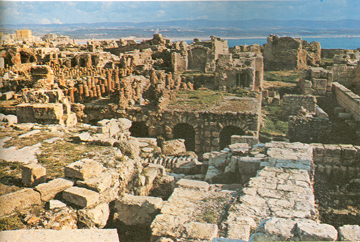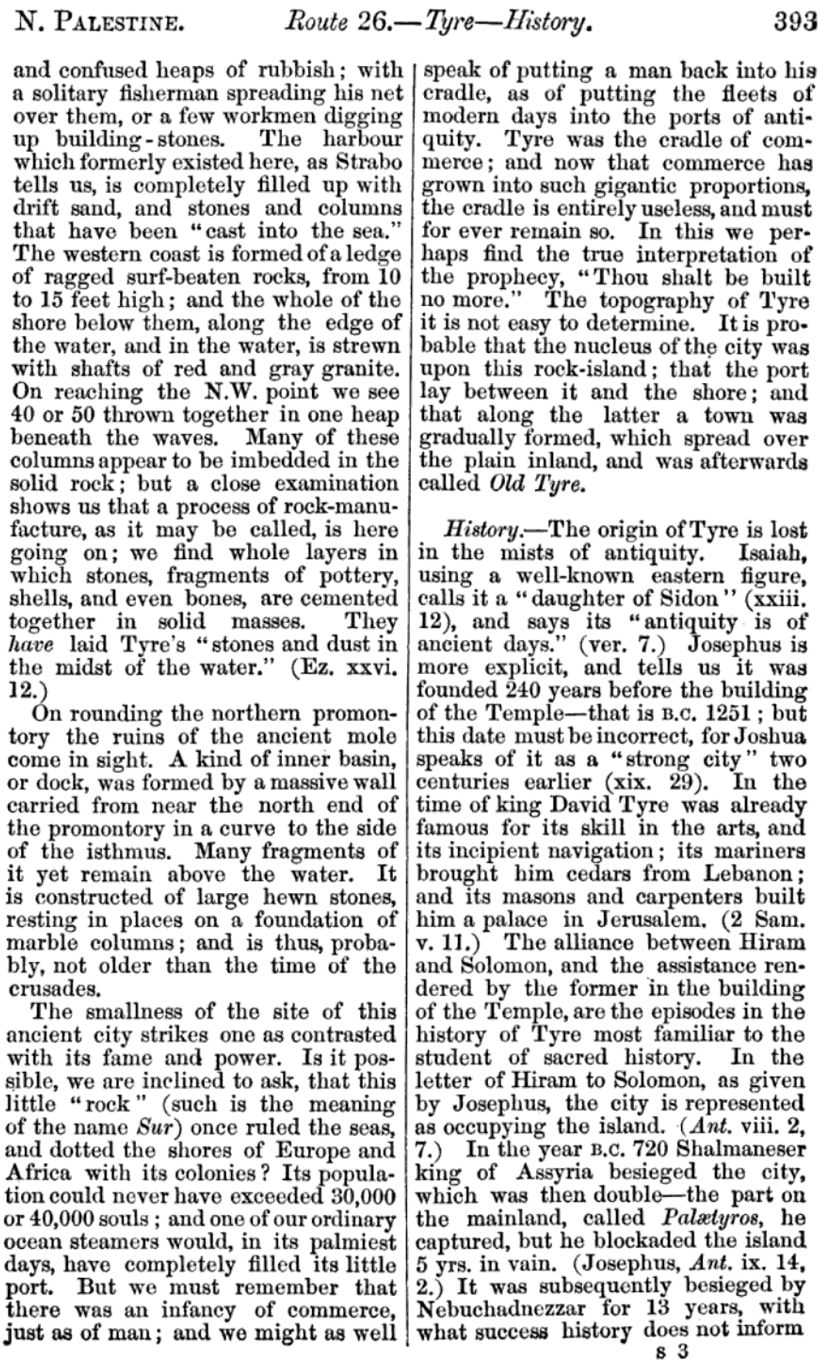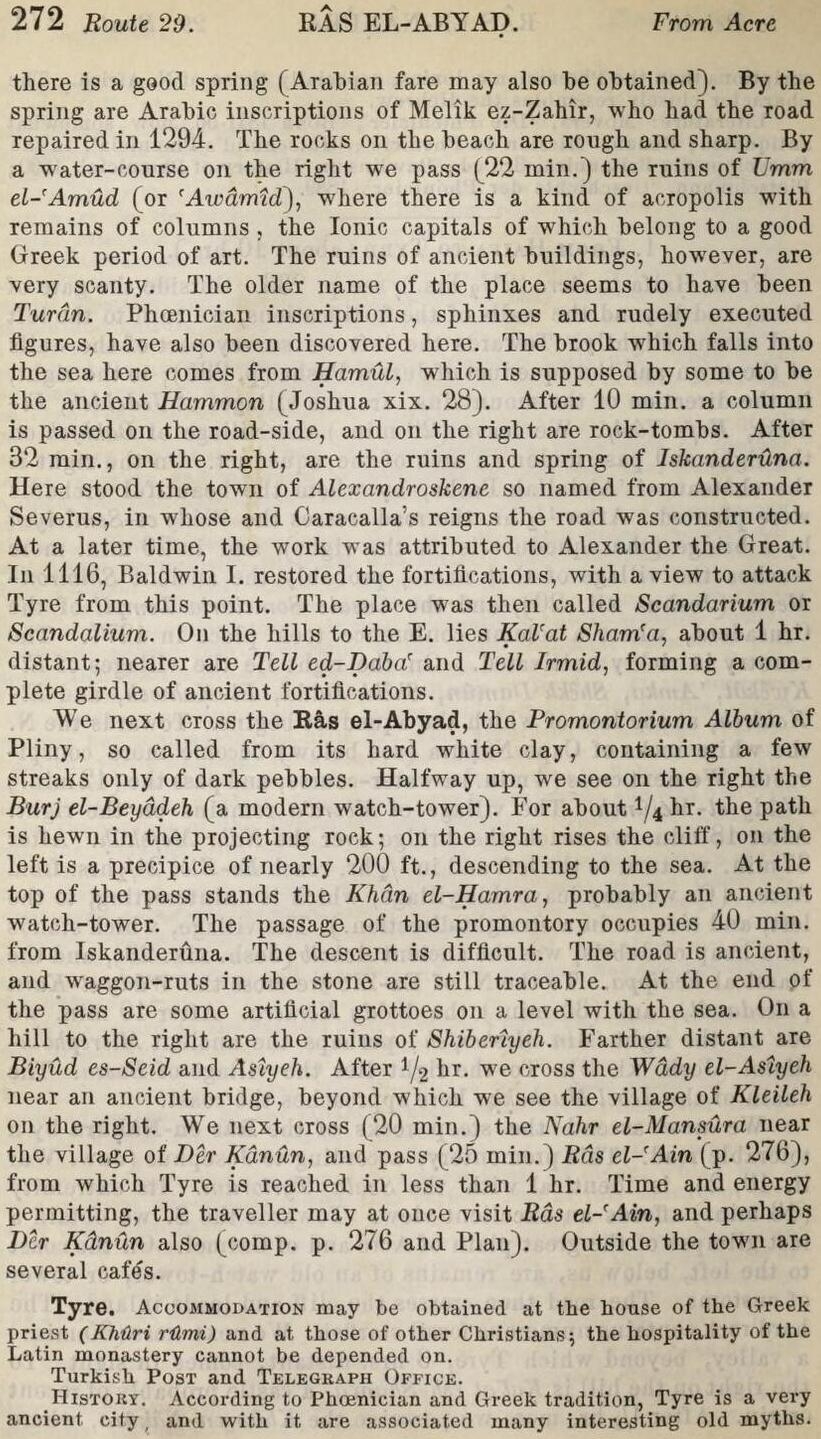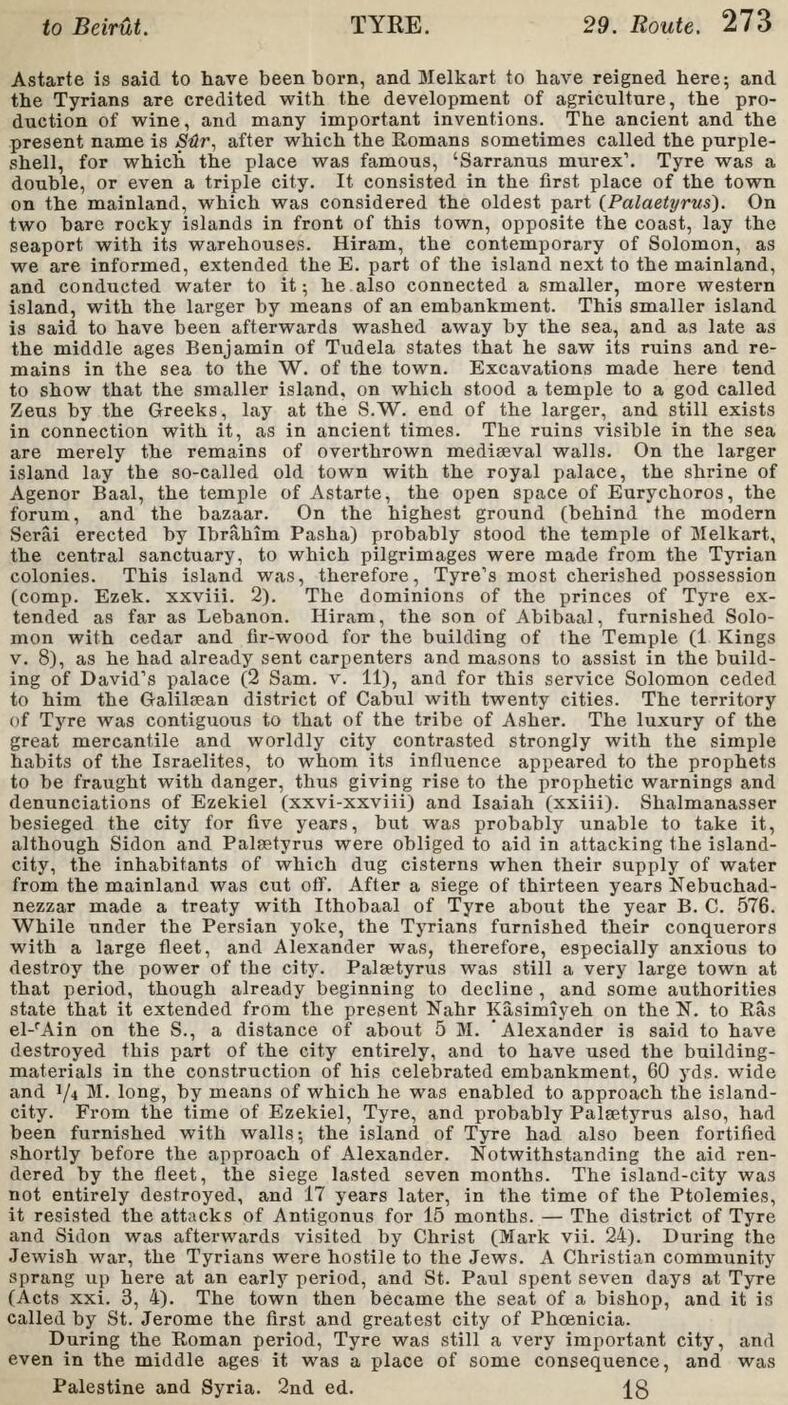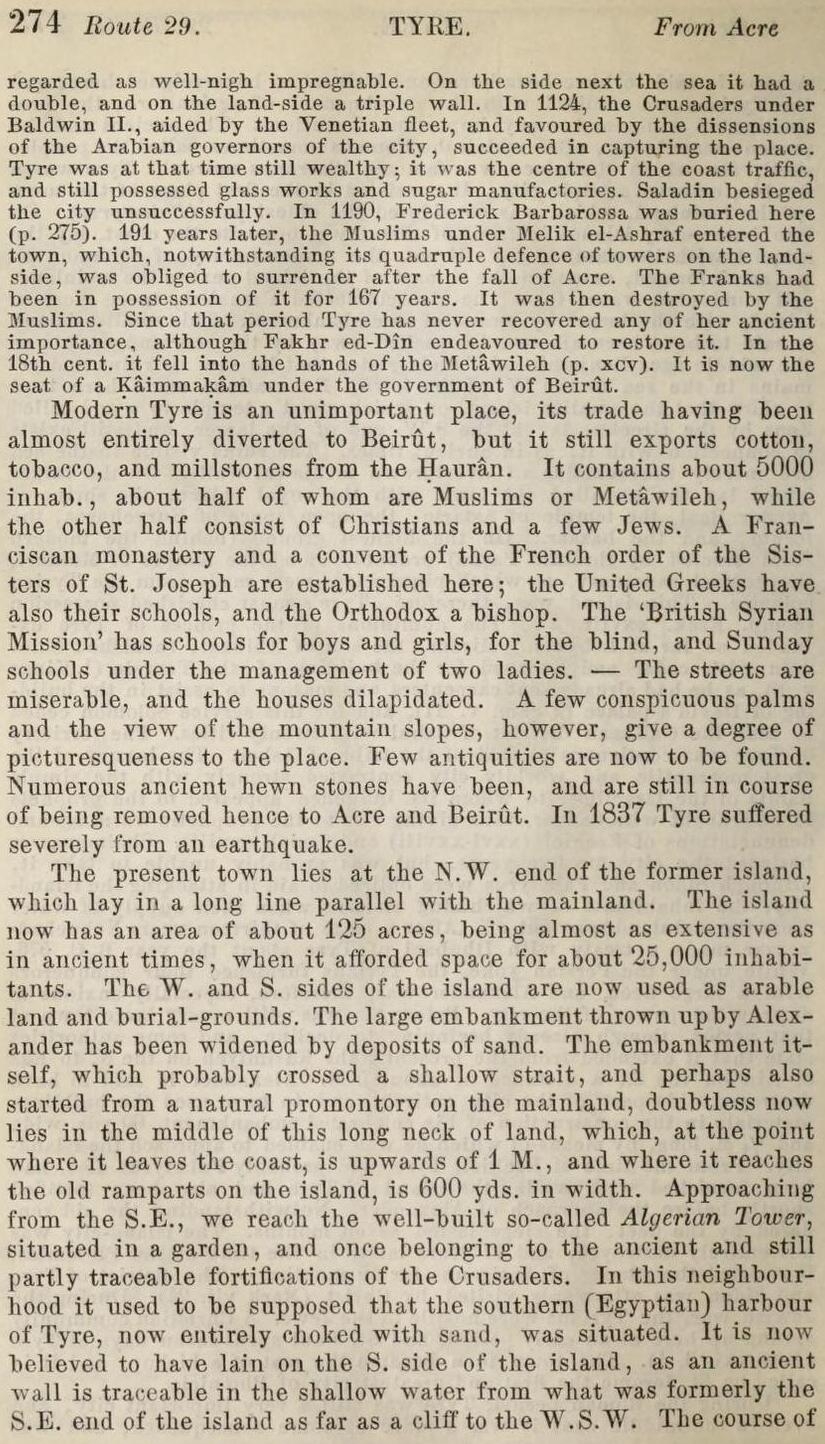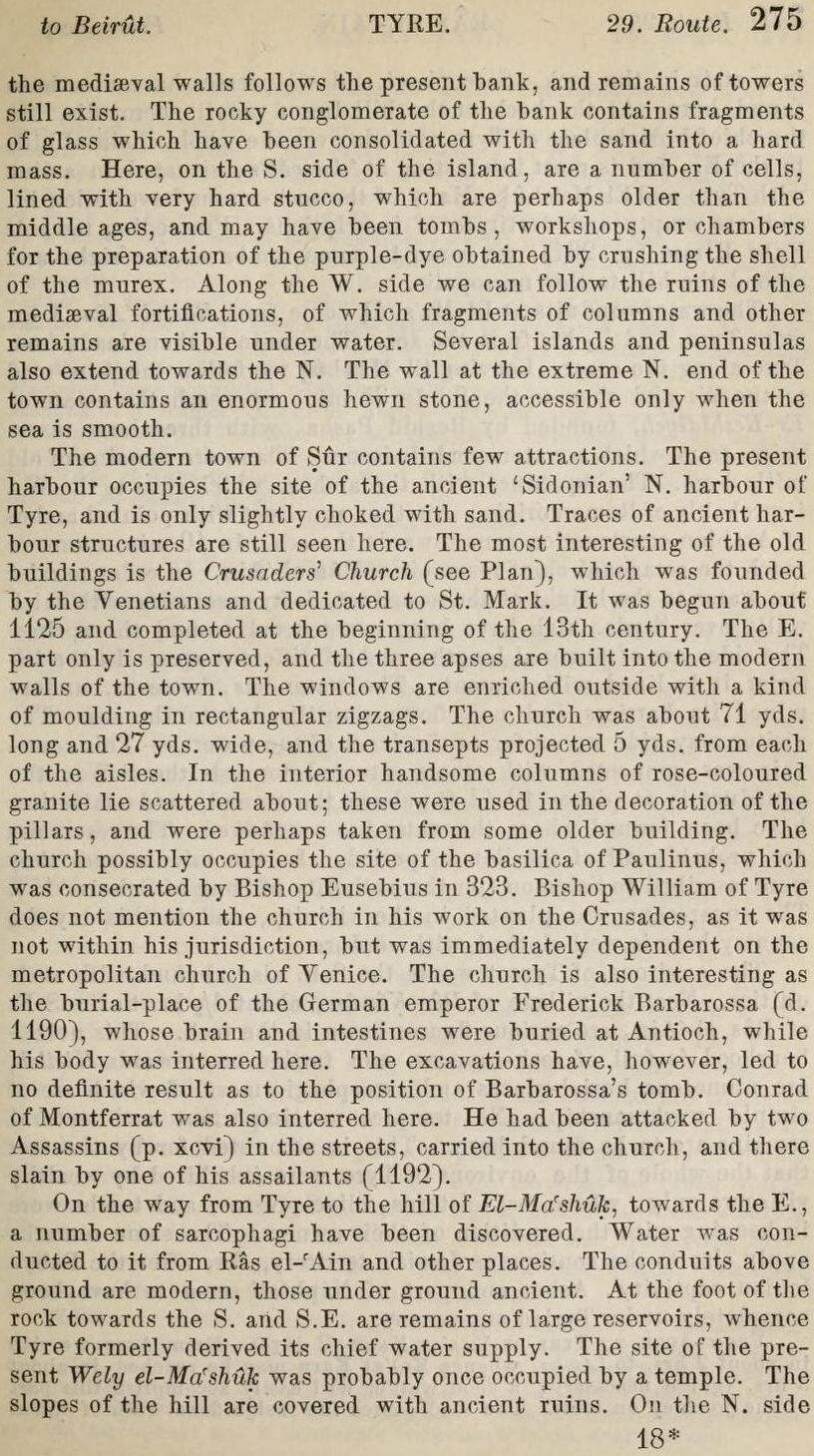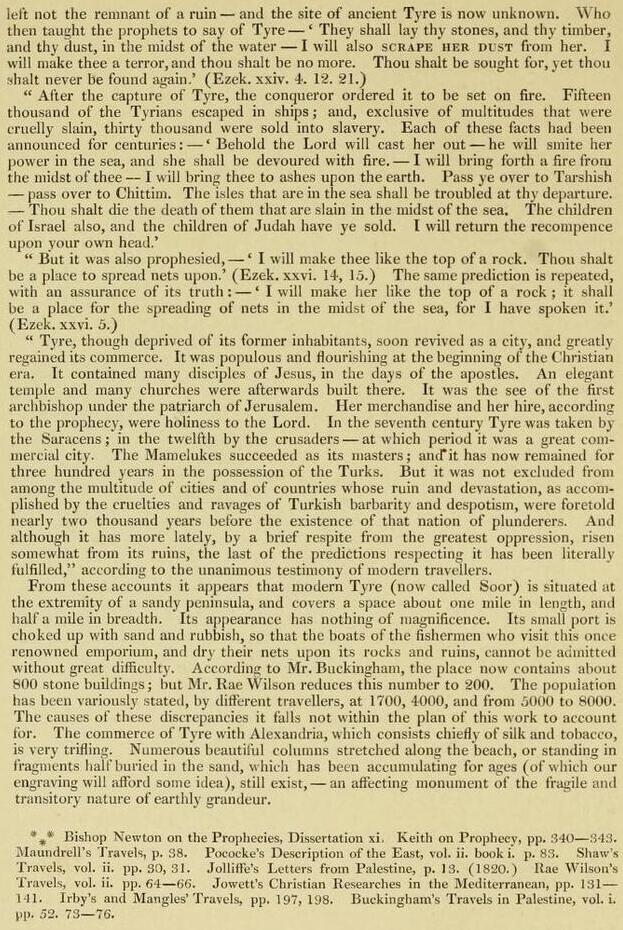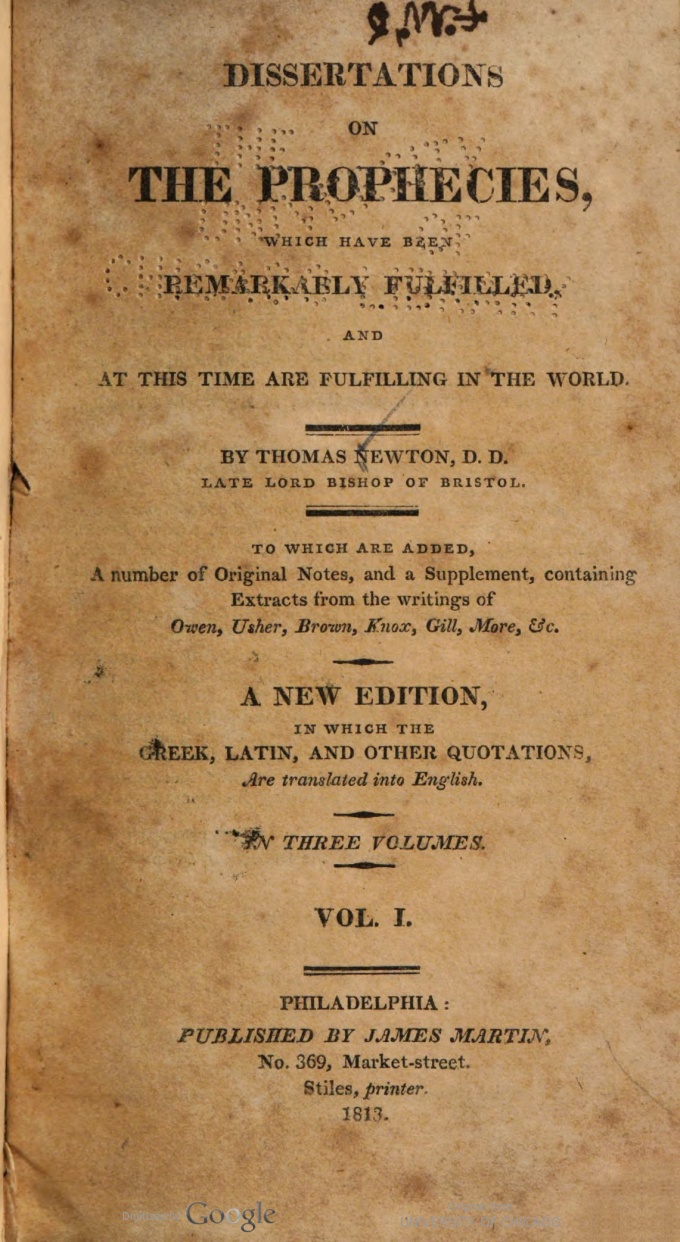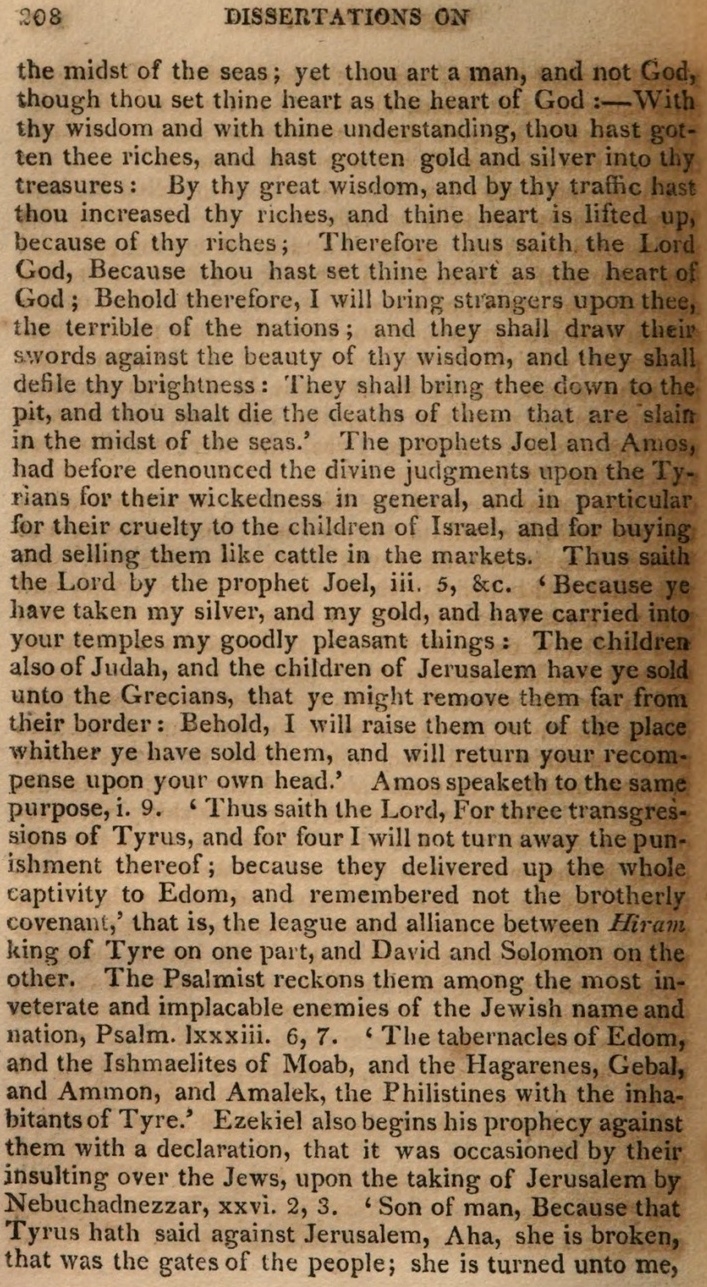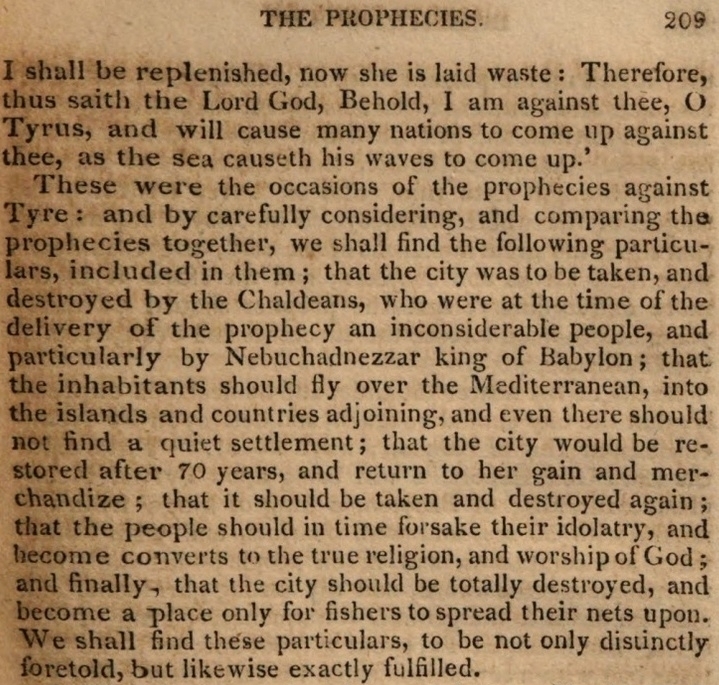|
Other Archaeological Sites / The Neolithic of the Levant (500 Page Book Online) Ancient Tyre (Sour) ProofRead and Updated March 21st 2020
Tyre in the The Bible cyclopædia: Illustrations of the civil and natural history of the sacred writings ...
Cyclopaedia of Biblical, theological and ecclesiastical literature
A handbook for travellers in Syria and Palestine by Josias Leslie Porter https://ancientneareast.tripod.com/PDF/A_handbook_for_travellers_in_Syria_and_P.pdf
Palestine and Syria : handbook for travellers by Karl Baedeker (Publisher) et al https://ancientneareast.tripod.com/PDF/palestinesyriaha00karl_1894.pdf (Google Books: 1876) / (Internet Archive: 1876) / (1894) / (1906)
Landscape illustrations of the Bible : consisting of views of the most remarkable places mentioned in the Old and New Testaments by Thomas Hartwell Horne et al (1836) PDF: https://ancientneareast.tripod.com/PDF/landscapeillustr00hornpdf. TYRE was the most celebrated city of Phoenicia and the theatre of an immense commerce and navigation. Tyre was twofold --- insular and continental : Tyre on the island succeeded to the more antient city on the continent which was called Palæ-Tyrus or Old Tyre. Though inferior to Sidon in point of antiquity, Palæ-Tyrus soon rose above it and became the richest mart of the antient world. In Joshua xix 29 it is called the "strong city -- Tyre" and in 2 Samuel xxiv 7 the "strong hold of Tyre”. In reference to its antiquity Isaiah (xxii 7) calls it "a city whose antiquity is of antient days". From Hiram, king of Tyre, Solomon obtained timber, gold and workmen for the building of the temple. Hiram also sent his ships with those of Solomon to Ophir and Tarshish (1 Kings ix 10–14, 27 and x 22). In later times the friendship of the Tyrians and Jews seems to have been interrupted, whence the prophets Amos and Joel speak of Tyre as of a hostile city (Amos i 9, 10 and Joel ii 4). At the time of the Assyrian invasion under Shalmaneser, Old Tyre had arrived to such a pitch of opulence and splendour that Isaiah speaks of it as the "joyous city .... the crowning city whose merchants are princes, whose traffickers are the honourable of the earth" (xxiii 7, 8). It was afterwards taken by Nebuchadnezzar (whose forces it withstood for thirteen years); but not until the Tyrians had removed their effects to the insular town and left nothing but the bare walls to the victor, by whom they were demolished. The fate of Tyre is the subject of numerous predictions. See particularly Isaiah xxiii -- Jeremiah xxv -- Ezekiel xxvi-xxviii -- Amos i 9, 10 and Zechariah ix 1–8. While this mart of nations was in the height of its opulence and power and at least one hundred and twenty-five years before the destruction of Old Tyre, Isaiah pronounced its irrevocable fall; and as insular Tyre succeeded to Palæ-Tyrus, being inhabited by the same people (whose wickedness, exultation over the calamities of the Jews and their cruelty in selling them for slaves are assigned as the reasons of the impending judgments), the fate of both is included in the prophecy. The predictions of the prophets above referred to were extremely minute and circumstantial and announced that this city was to be taken and destroyed by the Chaldæans (who, when the prophecy was delivered, were an inconsiderable people) and particularly by Nebuchadnezzar; that the inhabitants should flee over the Mediterranean into the islands and countries adjoining and even there should not find a quiet settlement; that the city should be restored after seventy years and return to her gain and merchandise ; that it should be taken and destroyed a second time; that the people should, in time, forsake their idolatry and become converts to the worship and true religion of God; and finally, that the city should be totally destroyed and become a place only for fishers to spread their nets upon. Bishop Newton has proved how minutely these various predictions were fulfilled, to whose valuable Dissertations on the Prophecies the reader is necessarily referred. Yet a few of the most striking predictions, the fulfilment of which rests on the most unexceptionable testimony, may be selected.
Dissertations on the Prophecies: which have remarkably been Fulfilled and
One of the most singular events in history was the manner in which the siege of Tyre was conducted by Alexander the Great. Irritated that a single city should alone oppose his victorious march, enraged at the murder of some of his soldiers and fearful for his fame; --- even his army's despairing of success could not deter him from the siege. And Tyre was taken in a manner, the success of which was more wonderful than the design was daring; for it was surrounded by a wall one hundred and fifty feet in height and situated on an island half a mile distant from the shore. A mound was formed from the continent to the island ; and the ruins of old Tyre, two hundred and forty years after its demolition, afforded ready materials for the purpose. Such was the work that the attempts at first defeated the power of an Alexander. The enemy consumed and the storm destroyed it. But its remains, buried beneath the water, formed a barrier which rendered successful his renewed efforts. A vast mass of additional matter was requisite. The soil and the very rubbish were gathered and heaped. And the mighty conqueror, who afterwards failed in raising again any of the ruins of Babylon, cast those of Tyre into the sea and took her very DUST from off her. He left not the remnant of a ruin and the site of ancient Tyre is now unknown. Who then taught the prophets to say of Tyre --- 'They shall lay thy stones and thy timber and thy dust in the midst of the water --- I will also SCRAPE HER DUST from her. I will make thee a terror and thou shalt be no more. Thou shalt be sought for yet thou shalt never be found again' (Ezekiel xxiv 4, 12, 21). From these accounts it appears that modern Tyre (now called Soor) is situated at the extremity of a sandy peninsula and covers a space about one mile in length and half a mile in breadth. Its appearance has nothing of magnificence. Its small port is choked up with sand and rubbish so that the boats of the fishermen who visit this once renowned emporium, and dry their nets upon its rocks and ruins, cannot be admitted without great difficulty. According to Mr. Buckingham the place now contains about 800 stone buildings; but Mr. Rae Wilson reduces this number to 200. The population has been variously stated by different travellers at 1700, 4000, and from 5000 to 8000. The causes of these discrepancies it falls not within the plan of this work to account for. The commerce of Tyre with Alexandria, which consists chiefly of silk and tobacco, is very trifling. Numerous beautiful columns stretched along the beach; -- or standing in fragments half buried in the sand, which have been accumulating for ages (of which our engraving will afford some idea), still exist --- an affecting monument of the fragile and transitory nature of earthly grandeur.
Dissertations on the prophecies : which have been ... Volume 1 by Thomas Newton (1813)
The History of the Ancient Near East Electronic Compendium |
